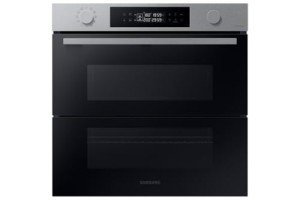Don't Buy Into These "Trends" About Integrated Electric Oven

The Rise of Integrated Electric Ovens: A Comprehensive Guide
Integrated electric ovens are ending up being increasingly popular in modern cooking areas due to their sleek design, energy performance, and advanced cooking functions. Designed to blend flawlessly with kitchen cabinets, these appliances not only enhance aesthetic appeals but likewise offer a range of performances that cater to the culinary needs of contemporary homes. official statement will delve into the advantages of integrated electric ovens, how they compare to standard ovens, and crucial elements to think about when acquiring one.
What is an Integrated Electric Oven?
An integrated electric oven is created to be built into kitchen cabinets, offering a structured look that makes the most of area performance. Unlike freestanding ovens, integrated designs typically feature a flush fit with kitchen cabinetry and come with styles that can match or complement the surrounding kitchen decoration. These ovens normally include a large variety of functionalities, consisting of convection cooking, self-cleaning options, and smart technology functions.
Advantages of Integrated Electric Ovens
The appeal of integrated electric ovens lies in their many advantages. Below are some of the crucial benefits:
Aesthetic Appeal
- Integrated ovens use a tidy and contemporary look.
- They can be customized to match the kitchen's kitchen cabinetry and design theme.
Area Efficiency
- Developed to take full advantage of the offered kitchen area.
- Perfect for smaller sized cooking areas where freestanding designs might be troublesome.
Advanced Cooking Features
- Lots of designs include functions such as convection heat, steam cooking, and multiple cooking modes.
- Smart ovens can even connect to Wi-Fi for remote monitoring and control.
Energy Efficiency
- Electric ovens frequently supply more constant heating and faster cooking times compared to gas ovens.
- More recent models are created with energy-saving innovations, which can assist decrease energy expenses.
Improved Safety
- Integrated ovens generally include functions such as car shut-off and child lock functions for included safety.
Table 1: Comparison of Integrated Electric Ovens and Traditional Ovens
| Feature | Integrated Electric Oven | Standard Oven |
|---|---|---|
| Design | Built-in, flush-fitting | Freestanding, takes up more area |
| Cooking Efficiency | Normally quicker, more even heating | Varies, usually longer warm up |
| Aesthetic Integration | Smooth with kitchen cabinetry | Standout device |
| Space Usage | Space-saving | Requires more flooring space |
| Advanced Features | Often consists of wise innovations | Minimal technological integration |
| Energy Efficiency | Usually more energy-efficient | Can vary by design |
Key Features to Look For in Integrated Electric Ovens
When searching for an integrated electric oven, different features should be taken into consideration to guarantee you select a design that fits your cooking style and preferences. Here are some essential functions to think about:
Size and Capacity
- Try to find ovens that fit within your kitchen cabinets and assess internal capability based upon your cooking requires.
Cooking Modes
- Consider designs that provide numerous cooking functions including bake, broil, steam, and convection to expand cooking possibilities.
Self-Cleaning Options
- Self-cleaning modes save time and effort in keeping the oven.
Control Options
- Touchscreen controls or wise tech integration for remote gain access to can include benefit to cooking.
Energy Rating
- Pick energy-efficient designs with excellent ratings to guarantee lower operating expense.
Guarantee and Support
- Examine for guarantees to cover repairs and replacements and the accessibility of client service.
Frequently asked questions
Q1: What makes integrated electric ovens different from built-in ovens?
A1: Integrated electric ovens are particularly developed to blend into cabinets, offering a smooth aesthetic, while built-in ovens may not always have the exact same flush design and frequently stand out more as private appliances.
Q2: Are integrated electric ovens more pricey than conventional ovens?
A2: Generally, integrated electric ovens can be more pricey due to their style and advanced functions. However, the long-lasting energy cost savings and enhanced performance typically offset the preliminary cost.
Q3: How do I guarantee correct installation of an integrated electric oven?
A3: It is suggested to hire a professional for installation, as integrated ovens need exact measurements and can involve electrical connections that should abide by regional structure codes.
Q4: Can I tailor the appearance of my integrated electric oven?
A4: Yes, lots of producers use adjustable panels or finishes to match your kitchen cabinets, permitting a fully integrated appearance.
Q5: What maintenance does an integrated electric oven usually need?
A5: Regular cleaning, especially after heavy use, and checking seals and vents for wear are recommended to maintain the oven's functionality and appearance.
In conclusion, integrated electric ovens are a practical and trendy addition to modern kitchens. Their benefits consist of visual appeal, energy effectiveness, and advanced cooking functions, making them a popular option for home cooks. Understanding the crucial characteristics and comparing different designs can help customers make notified getting decisions and select an integrated oven that best fits their culinary needs and kitchen design. With their seamless integration and technological improvements, these ovens are poised to become staples in the kitchen for years to come.

